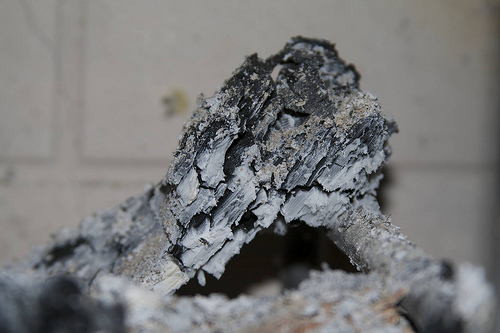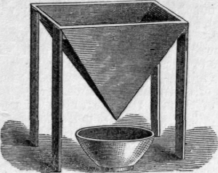Making Caustic Potash
 One of the major ingredients in soap making is Caustic Soda or Lye. Most soap-makers use industrial grade Sodium Hydroxide as their Caustic Soda but really any strong base would work in the soap making process. One such caustic that can be produced at home is Caustic Potash, or Potassium Hydroxide. While potassium hydroxide is often used to make softer bars of soap or even liquid soap, the type of wood ashes that are used can be selected to impart extra properties to the soap that would not be available to industrially purified chemicals. What every lye you choose to use the metaphysical farms lye calculator lets you choose either sodium hydroxide or potassium hydroxide when making soap. If you want to know how to make your own lye you will need the following equipment:
One of the major ingredients in soap making is Caustic Soda or Lye. Most soap-makers use industrial grade Sodium Hydroxide as their Caustic Soda but really any strong base would work in the soap making process. One such caustic that can be produced at home is Caustic Potash, or Potassium Hydroxide. While potassium hydroxide is often used to make softer bars of soap or even liquid soap, the type of wood ashes that are used can be selected to impart extra properties to the soap that would not be available to industrially purified chemicals. What every lye you choose to use the metaphysical farms lye calculator lets you choose either sodium hydroxide or potassium hydroxide when making soap. If you want to know how to make your own lye you will need the following equipment:
Equipment Needed
The first ingredient you will need is soft water. You can obtain this by buying soft distilled water (no mineral water), getting water from a dehumidifier or the traditional way is to collect rain water in a barrel. This ingredient by far is the most important to get right to ensure a good leaching of lye. Next you will need a container with a spout at the bottom. Traditionally this has been a wooden barrel with a hole drilled on the bottom big enough for a cork but if you don’t have access to wooden barrels, you can easily use a cooler with a spout at the bottom. You will also need rocks and straw or cheese cloth to filter the ash. The final ingredient you need is wood ashes. The best ashes to use are hardwoods and you want to avoid evergreens (like pine and fir). Other things you can use are ashes of herbs and flowers to add a special touch to your lye.
Quick Reference
- Soft Water
- Rocks
- Straw, grass or cheese cloth
- Container with a closable spout at the bottom
- Wood ash
- A wood, glass or plastic bucket to collect the lye water. (no metal)
 Step 1: Find a place that the spouted container will be undisturbed. Lye is caustic. Take the necessary precautions. I suggest doing this outside or in your garage. Put some bricks down and place the container on top of them. The reason for this is to raise the container up so that you can easily drain off the lye into a bucket when it is ready. Give yourself room to work.
Step 1: Find a place that the spouted container will be undisturbed. Lye is caustic. Take the necessary precautions. I suggest doing this outside or in your garage. Put some bricks down and place the container on top of them. The reason for this is to raise the container up so that you can easily drain off the lye into a bucket when it is ready. Give yourself room to work.
Step 2: Cover the bottom of the container with some palm-sized clean rocks (e.g. river rock). Cover the rocks with approximately 6″ of straw (this can be hay or grass) or a few layers of cheese cloth. This will filter the ashes and help your lye drain cleanly.
Step 3: Burn the wood you have collected and save the ashes. An ideal place is in a fireplace or some other contained location.
Step 4: Scoop the ashes out and put them in the prepped spouted container. Be sure the ash is completely cool or you might have a fire start in your container.
Step 5: Put a pan under the hole and open the spout. Pour the soft water in until you see it start to drain into the pan, then close the spout. The water level should be about 6″ from the top. After a day, the first ash should settle and you can add more ash.
Step 6: Let it sit for at least 3 days. You can add ash all week and drain it regularly on a specific day of the week.
Step 7: Check to see if your lye is ready. If you don’t have fancy litmus papers, you can use a potato to test the strength of the lye water. Put a potato in the top of the container and if it floats 1/4 of an inch above the water then your lye water is ready
Step 8: Put it under the tap, gently pull the cork, and fill your containers. Leave enough head room so that they will be safe and easy to pour. Make sure that you have tight, fitting lids.
Finally you will want to store your lye in a cool dark place until use. (The sooner the better)
